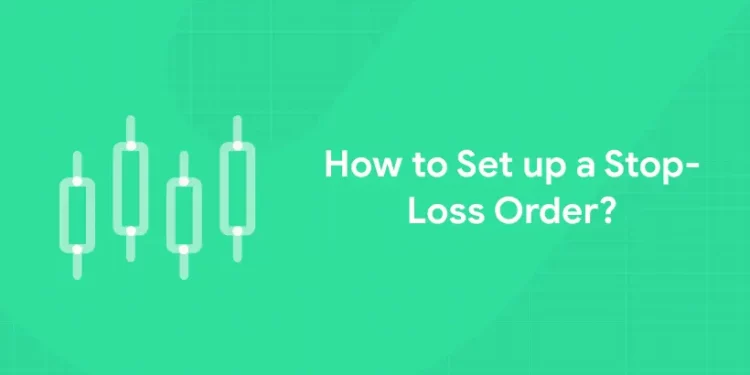Table of Contents
One risk management technique that you should incorporate into your trading plan is a stop-loss order. This type of market order lets you control trading risk by defining the point at which, should the price of an instrument move against you, you can close out of your position. Because the financial markets are known for experiencing sudden swings and high levels of volatility, using a stop-loss order in your trades can be very beneficial.
Start investing like a pro. Enroll in our Stock Market course!
What is a Stop-Loss Order?
A stop-loss order is a market order that closes a position once the instrument/asset hits a specific price. An investor’s losses on a trade are limited by a stop-loss. It will restrict your losses to 10% if you set a stop-loss order for 10% below the buy price.
A stop-loss stops you out of the trade after your pre-set loss has been reached in an attempt to limit your losses. Your stop-loss order will remain in force until it is activated, cancelled, or your position is closed. Your interest in the instrument will be sold at the next available market price if its price drops below your threshold. It acts as an automatic exit strategy, stopping you from losing any further money on that trade once your limit is reached.
The trader determines the stop-loss level based on fundamental information, such as market circumstances and potential slippage. The gap between the projected price and the actual price at which the trade was executed is known as slippage in trading. This can happen while initiating or abandoning a trade during times of strong market volatility, such as significant news releases and events.
How to set up Stop-Loss Order
1: What is a stock?
- Open a live account, select your product (CFDs or spread betting), and get started.
- Launch a live trading chart by selecting an asset from the product collection.
- Choose ‘Order Settings’ from the drop-down menu next to the asset name.
- Stop-loss, take-profit, limit, and stop entry orders can all be customised here. Default measures can be specified as points, a percentage, or a price value in GBP.
- Additionally, you have the option of deciding how long the stop-loss order remains open ended or after one day till it expires.
The Importance of a Stop-Loss
Stop-loss orders are a crucial component of any trading plan. The following are some advantages of adding a stop-loss to your trades:
- They are helpful if you are unable to keep a close eye on the market for long stretches of time.
- They can aid in loss management, which is especially crucial when trading with leverage.
- Attaching one doesn’t cost anything.
- Instead of hanging onto failing deals, it automatically exits, which reduces loss aversion.
Entri App: Stock Market Course
The greatest stock market course online is Entri Finacademy Stock Market Course, which provides thorough instruction and gives you the tools you need to confidently navigate the complexity of stocks. Sophisticated educators teach everything from fundamentals of trading to sophisticated tactics, utilising real-world examples and models to provide useful insights into risk, diversification, and analysis. This course, which is designed for all skill levels—from novices to experts—enables you to make wise financial decisions. To begin your road towards being a self-assured investor.
Conclusion:
Stop-limit orders are similar to stop-loss orders, but as the name implies, they will only execute at a specific price. A stop-limit order has two prices specified: the limit price and the stop price, which will change the order to a sell order. The sell order becomes a limit order that will only execute at the limit price or better, rather than a market order to sell.
Start investing like a pro. Enroll in our Stock Market course!
Frequently Asked Questions
How to set a stop-loss order?
Navigate to the trade placement area of your online brokerage account. Select a stop loss order as opposed to a market order. To put a stop loss order, enter or scroll down to the desired price.
Are stop-loss orders advisable?
They shield investors from suffering uncontrollably large losses.
What are the disadvantages of a stop-loss?
The primary drawback of stop loss trading is that it might be triggered by sudden changes in the price of the asset.
What is an example of a stop-loss order?
A trader places a stop-loss order at $90 after purchasing 100 shares of XYZ Company for $100. Over the following few weeks, the stock drops and closes to $90. When the trader’s stop-loss order is triggered, the position is sold at a slight loss at $89.95.










